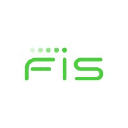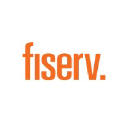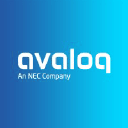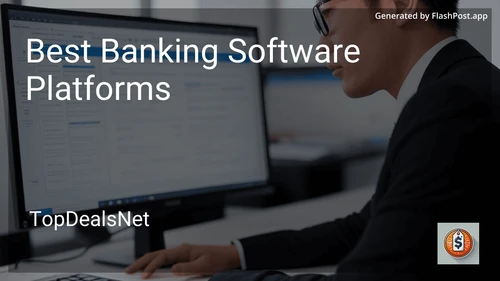Best Banking Software Platforms in January 2026

Finacle
- ["Core banking"
- "Digital banking"
- "Payments"
- "Enterprise risk and compliance management"
- "Blockchain solutions"]

Temenos
- ["Core banking"
- "Wealth management"
- "Payments"
- "Fund management"
- "Analytics and reporting"]

FIS Global
- ["Core banking"
- "Digital banking"
- "Payment solutions"
- "Lending and borrowing"
- "Risk
- fraud and compliance management"]

Fiserv
- ["Digital banking"
- "Card services"
- "Payments"
- "Lending solutions"
- "Customer and channel management"]

Avaloq
- ["Core banking"
- "Wealth management"
- "Investment management"
- "Mobile banking"
- "Cloud solutions"]
In today's rapidly evolving financial landscape, selecting the best banking software platform is crucial for both established institutions and emerging fintech companies. With numerous options available in the market, understanding the key features and considerations is essential. This guide provides insights into choosing the right banking software without leaning towards any specific product recommendations.
What Are Banking Software Platforms?
Banking software platforms are comprehensive systems designed to manage a wide array of financial services. These platforms facilitate core banking operations such as account management, transaction processing, and regulatory compliance. By integrating various functionalities, they enable banks to efficiently serve both retail and corporate clients while maintaining robust security measures.
Key Features to Look for in Banking Software Platforms
When evaluating banking software platforms, consider the following key features to ensure a perfect fit for your organization:
-
Scalability: Ensure the platform can handle your current needs and grow with your business. Scalability is essential for accommodating increased transaction volumes and expanding service offerings.
-
Security: Given the sensitive nature of financial data, the platform must offer advanced security features like encryption, multi-factor authentication, and real-time fraud detection.
-
User Experience: A user-friendly interface improves customer satisfaction and streamline operations. Learn more about enhancing customer experience by exploring the best banks for customer experience.
-
Integration Capabilities: The software should easily integrate with existing systems, including CRM and ERP solutions, to ensure seamless operations across various business functions.
-
Compliance Management: Ensure the platform helps manage regulatory requirements efficiently. Compliance management tools should be built into the system to adapt to changes in financial laws and regulations.
Benefits of Implementing Effective Banking Software
Investing in a robust banking software platform can bring numerous benefits, including:
-
Improved Efficiency: Automation of routine tasks and streamlined processes lead to significant operational efficiency and cost savings.
-
Enhanced Customer Service: A modern platform allows for personalized customer interactions, improving satisfaction and loyalty. To better serve businesses, learn about small business banking solutions.
-
Risk Management: Efficiently manage risk through real-time monitoring and advanced analytics, providing insights to mitigate potential financial threats.
-
Innovation: Staying ahead in the competitive financial market requires continually offering innovative products and services. Banking software platforms can facilitate innovation through modular features and agile development capabilities.
How to Choose the Right Banking Software Platform
Selecting the ideal banking software platform involves a thorough assessment of your business needs and strategic goals. Here’s a step-by-step approach:
-
Conduct a Needs Assessment: Identify the specific needs of your financial institution, including operational challenges and growth targets.
-
Research and Shortlist Options: Explore different platforms, considering both cloud-based and on-premises solutions. Compile a list of potential candidates that align with your requirements.
-
Evaluate Vendor Experience: Look for vendors with a proven track record in the banking industry. Their experience can offer insights into industry-specific challenges and solutions.
-
Request Demos and Trials: Engage with vendors to arrange demonstrations and trial periods. This hands-on experience allows your team to assess usability and feature alignment.
-
Consider Total Cost of Ownership: Evaluate both upfront and long-term costs, including licensing, implementation, training, and maintenance expenses.
-
Seek References and Reviews: Obtain feedback from current or past users of the platform to gauge satisfaction and performance.
-
Pilot Testing and Feedback: Conduct a pilot test with a selected user group to gather feedback and make an informed decision.
Conclusion
Choosing the best banking software platform is a pivotal decision that affects your institution's efficiency, customer satisfaction, and competitive stance. By focusing on key features, benefits, and a structured evaluation process, you can select a software solution that meets your financial institution's needs today and in the future.
